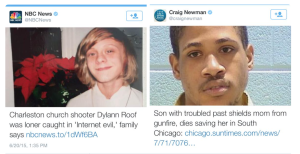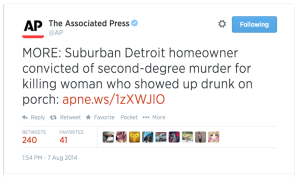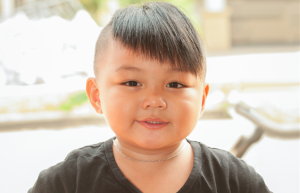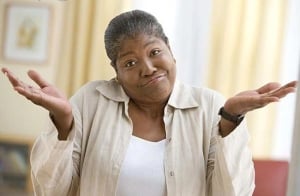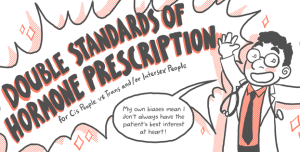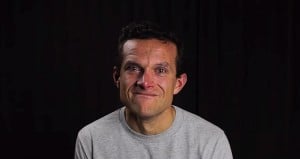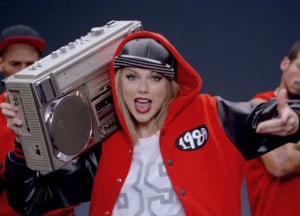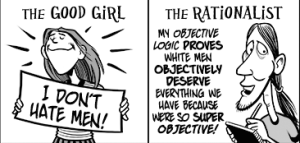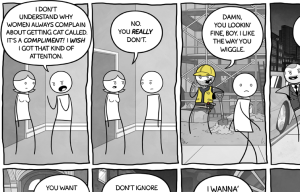Are you paying attention to how the media gives you information?
Sandra Bland, a 28-year-old Black woman who had spoken out against police violence, died in police custody on July 13 after a routine traffic stop.
Local authorities ruled her death a suicide.
The people who knew Bland are skeptical of that version of events, and a newly released video showing a Texas state trooper aggressively arresting her has cast widespread doubt. We don’t know the details, but some of the relevant information was already filled in before Bland’s death.
Like the fact that the county where Bland died has a vicious history of racism that includes the district attorney’s office and the standing sheriff, who was fired from his previous post for racism.
Like the statistics that show how police target people of color for stops, arrests, and incarceration, and are far more likely to use force against them.
Like the fact that Bland was a Black woman living in a country, state, and county where racist violence has been weaved into everyday life since the day Bland was born, and for centuries before that.
But one media outlet chose to frame the narrative this way: “Woman Found Dead in Jail Cell Had Prior Run-Ins With Law.”
It’s true – Sandra Bland had been pulled over like this before. Several of those “run-ins” were citations for unpaid traffic tickets. Her last encounter with police was the fatal one, but like other people of color who are targets, it wasn’t the only one.
If you weren’t paying attention, you might think a dangerous hardened criminal – not the real Sandra Bland – had just died in jail.
Were you paying attention when the media told you about last month’s racist mass murder in Charleston, South Carolina?
On June 17th, a white man seeking to kill Black people walked into Emanuel AME Church, sat through Bible Study with the congregants, and then massacred all of them but one. He stole nine innocent lives.
While the mainstream media that so many of us consume covered that much, it didn’t have a complete analysis of why this happened – and that’s not enough.
Dylann Roof acted on his belief in white supremacy. And on inspiration from George Zimmerman, the man who was acquitted for killing unarmed Black teenager Travyon Martin. And further on complicit support from friends who did nothing when they heard him tell racist jokes and talk about starting a “race war.”
He acted on the anti-Black hatred and fear generated from stereotypes of Black people as sexual predators. On strategies of white supremacist groups active in the US today – strategies that have continued with arson attacks on multiple Black churches since the massacre.
He acted on biases that the media perpetuates every day.
This was a mass murder supported by a white supremacist system that intersects with our daily lives. Unfortunately, he’s not the last to violently lash out with this support.
So after incidents like the attacks against the Charleston congregants and Sandra Bland, we need to pay attention to how the media participates in this dangerous system, and demand some crucial changes.
To have any hope of preventing and healing from this type of horrendous violence, we have to deliberately and ferociously take on the racism that prevails in our country to allow this to happen.
But the way we get our information about tragedies like this one skews our beliefs about what happened, why, and what we should do about it.
Most of us get information from the mainstream media – which blatantly feeds us a biased distortion of the truth, with the wrong information, favoritism toward white people (whether they’re murderers or not), and the demonization of people of color (whether they’re victims or not).
If you think of the news as simply reporting what you need to know, then you’re missing the fact that it’s reinforcing a basic idea of white supremacy: that white people are more valuable than people of color.
It’s just like other instances of racism – sometimes it’s obvious and you can easily point out that it’s wrong. But a lot of the time, it’s subtle, playing right into the implicit biases you don’t even know you have to make you believe in ideas you don’t even realize are racist.
It’s a disgusting manipulation of the public that lets everyday racism go unchecked.
So instead of buying into the media’s biases as people of color lose their lives to racist violence, let’s pay attention to the following examples of how the media upholds white privilege.
1. They Show White People’s Accomplishments – And People of Color’s Alleged Crimes
We rely on the media to provide the details of who suspects and victims are.

This CBS News story on theater shooter James Holmes described his academic achievements and polite manners – a “typical American boy.”
Regardless of what defines someone’s story if they make it on the news – whether they’ve committed a heinous act or fallen victim to violence – we’re all dynamic human beings made up of more than a single incident. We’ve all had accomplishments and made mistakes.
So the media chooses which parts of our lives to show – and their choices often humanize white people while villifying people of color.
For instance, young white men responsible for horrible mass shootings are often given the “brilliant loner” treatment. Headlines describing killers like Adam Lanza and James Holmes as “smart,” “quiet,” and “nice” are common.
On the other hand, when young people of color are the victims of violence, they still rarely get their accomplishments named in the mainstream media.
In McKinney, Texas, white neighbors yelled racial slurs and physically assaulted a group of youth of color at a pool party – and things got even worse when a police officer called to the scene wrestled unarmed Black teenager Dejerria Becton to the ground, pulled a gun on her friends, and sat on her to restrain her.
So when Fox News’s Megyn Kelly talked about that horrible incident, she could’ve researched Dejerria Becton’s achievements. She could’ve focused on the fact that Dejerria was an innocent party who was invited to the honorable act of celebrating a friend’s graduation, AND who was following the officer’s instructions before he attacked her.
Instead, Kelly said that the girl was “no saint,” so rather than seeing her as an innocent victim of violence, viewers can believe that this young girl had it coming.
2. They Choose Charming Photos of White Victims – And ‘Incriminating’ Photos of Victims of Color
This makes the hashtag #IfTheyGunnedMeDown so powerful. It’s sad that some people have taken it to another level. pic.twitter.com/oZnLDRRDhN
— SUPERSAYIANGOAT (@SvmmieArnold) August 11, 2014
In addition to words, the media’s images have a huge influence on how we view people.
And once again, the media makes a choice – because we’ve all taken pictures that make us look impressive, and we’ve taken ones that people could use to make us look like we were up to no good.
When Twitter users started trending the hashtag #IfTheyGunnedMeDown, they highlighted how much the media makes different choices depending on race.
When white victims lose their lives, the media shows graduation pictures, family photos, positive images of the life lost.
They even often use such images for white suspects and murderers, giving us a sense of who they were before things went terribly wrong. Theater shooter James Holmes was shown in a smiling senior photo wearing a suit and tie below a headline calling him “a brilliant science student.”
When mainstream media outlets broke the story of Michael Brown’s slaying at the hands of the police, they could have used photographs from his recent high school graduation. Instead, many of them chose an image that showed him towering over the camera, holding his hand in what some people on social media interpreted as a gang sign.
Clearly, this media representation sways the conversation about whether or not the police were justified in killing the unarmed teenager. A one-dimensional representation of a victim as a criminal makes us more likely to believe that the killers’ actions were necessary.
3. They Empathize With the ‘Motivation’ for a White Person’s Violence
This is the problem with the American media. Stay woke. pic.twitter.com/q1uWgcocLV — Rashad Alaiyan (@rashadalaiyan) June 21, 2015
Ever heard someone say “Wait until we get all the facts” before deciding how to judge a violence incident?
When we get these “facts” from the mainstream media, they encourage us to hold off judgment until we know what’s “really” going on.
And sometimes, even in cases of blatant racially biased violence, their narrative about what’s going on is based on empathy for the white perpetrator’s “motivations.”
For example, in the case of Dylann Roof, who killed those nine church-goers in Charleston for no reason other than that they are Black, some reporters said “we don’t know why he did it.” Others called it “an attack on religious freedom.”
Clearly, their hesitation to state the obvious influenced some people, who accused leaders speaking out about the racism – rather than the mass murderer who wanted to “start a race war” – of being the ones “making everything about race.”
If the media is so concerned about people’s motivations, you’d think they would’ve focused on what drove a Black man named Jim Jones to sacrifice his life by shielding his mother from bullets.
Instead, they called Jones a “son with a troubled past,” as Twitter user Rashad Alaiyan pointed out when he placed that headline side-by-side with one that described Dylann Roof as a “loner” who was “caught in ‘Internet evil.’”
This empathy for white attackers has the dangerous effect of encouraging us to look away from what’s really going on, and focus instead on the well-being of the person who committed a horrible act.
4. They Emphasize That a ‘Hateful’ White Person Acted Alone – While Casting People of Color as Stereotypes of Their Race
I’m not saying the media always shows empathy for white offenders.

In the US since 9/11, terrorist attacks by anti-government, racist, and other nonjihadist extremists have killed nearly twice as many people as those by jihadist extremists. Graphic: NY Times
There have been times when the mainstream media rightfully characterizes a white murderer as a person who did something terrible, showing empathy for the victims, regardless of their killer’s motivations.
But it’s also telling that in these cases, white offenders are often characterized as a “lone wolf,” someone who acted alone on their own hate.
Media outlets included descriptions of white supremacist Larry Steve McQuilliams, who thankfully killed no one in his Texas shooting rampage, as a lone wolf.
According to the Southern Poverty Law Center, 74% of domestic terrorist acts planned or carried out were the work of people working alone, with just one or two people behind 90% of them.
Violent racist extremists like McQuilliams fall into those categories, but the mainstream media rarely calls them “terrorists.” That word is usually reserved for mass murderers identified as Muslim extremists – especially those who are Arab.
This, in spite of the fact that people like white supremacists have killed almost twice as many people in the US as Muslim extremists who represent “terrorism” to so many Americans.
The media’s framing of terrorism often spreads Islamophobic ideas, perpetuating stereotypes that put the safety of Arab Americans – and anyone who’s seen to fit the erroneous stereotypes – at risk.
As we’ve seen since 9/11, when the media conflates Islam with terrorism, incidents of Islamophobic violence against innocent people rise.
Unlike with white suspects indoctrinated by violent white supremacist ideology, the mainstream media doesn’t mull over “why he did it” if a suspect is an Arab man. And they don’t even write him off as an evil lone wolf.
The media upholds the white privilege of not having the most violent people of your race appear as a stereotype of you.
And what a difference that makes – if white people who commit racist violence are just lone wolves, that means we don’t have to recognize the fact that they’re following a legacy embedded in our country’s violent history.
We don’t have to face the whole system of white supremacy, or be accountable for the fact that it’s not just the violent lone wolves who participate – it’s also everyday people with good intentions, like you and me.
5. They Humanize the ‘Troubled’ Lives of White Suspects
In addition to considering motivation, the media also humanizes white suspects by focusing on their struggles.

Caption: This headline from the LA Times was one of many humanizing Elliot Rodger by focusing on his mental health
Details mentioned far more often for white suspects than suspects of color include if they were “bullied,” or “kept to themselves,” or “had a hard home life.”
Santa Barbara shooter Elliot Rodger is one of many mass murderers whose mental health was the also focus of a lot of media coverage. Rodger, who is half white and half Malaysian Chinese, benefits from white privilege and this is an example of how.
Calling white male suspects “mentally ill” instead of examining other factors is a pattern in the media, and it does twice the injustice: shifting the blame away from the person who chose to commit violent acts, and reinforcing stigma about people with mental illness.
Having a mental illness doesn’t mean someone’s predisposed to violence. So framing the story this way is a harmful distraction and a benefit given only to white suspects.
When the suspect is a person of color, the media often uncovers criminal records, not medical records.
And once again, even victims of color don’t get the humanizing efforts to detail the causes of the troubling aspects of their backgrounds.
With so many poor people of color losing their lives to police violence, for instance, then why doesn’t the mainstream media talk about their struggles that lead to fatal encounters with police?
For example, Freddie Gray, who died in Baltimore police custody, grew up as one of thousands of low-income African-Americans exposed to deadly chemicals in an inner city home.
His family won a settlement after arguing that the lead poisoning he and his sister got “played a significant part in their educational, behavioral, and medical problems.”
Add up the traumatic effect of poverty and mass incarceration in poor Black neighborhoods with the experience of growing up as a Black male targeted by police, and you can understand why we need to address the deadly risk of criminalizing poor people of color. But that’s not what the mainstream media talks about.
6. They Use Innocence and Youth to Humanize White Suspects – And Treat Young Victims of Color as Older and Guilty
When suspects are young, the difference in how the mainstream media treats them is clear.
Studies show implicit biases lead many of us to see innocent Black children as guilty adults.
And it’s no wonder that our impression depends on the child’s race, when the source of much of our information – the mainstream media – reminds us that young white suspects are “kids.”
Even Adam Lanza, the 20-year-old who killed children in Newton, Connecticut, was described in headlines as a “deeply disturbed kid.”
Tamir Rice, on the other hand, is a 12 year old Black boy who was playing with a toy gun when he was killed by police less than two seconds after their arrival.
Tamir was the victim in this case, the one who tragically lost his life. But when the media calls him a “young man” and reminds us that he was “big for his age,” they’re not just reporting information on the tragic death of a child.
They’re not talking about why police are twenty-one times more likely to kill young Black men than young white men.
In fact, they’re helping justify violence and mass incarceration against youth of color, by characterizing them as dangerous criminals, whether they’re victims or not.
7. They Discredit Justice Movements for People of Color – And Give Rioting White People a Pass
Your media guide to the differences between #Ferguson and #pumpkinfest pic.twitter.com/XfRjlhgei0
— Matt Weinecke (@MattTW) October 19, 2014
Not everyone’s buying the media’s biased stories.
Racial justice activists put blood, sweat, and tears into advocating for justice for victims of color, and their voices help bring attention to the truth about racism.
Unfortunately, many of us have to filter through bias to hear activist voices, too.
And there’s a huge difference between how the media portrays mass gatherings advocating for people of color and those with groups of white people.
Protests for Freddie Gray in Baltimore, for instance, were part of a national grassroots movement, Black Lives Matter. They included dynamic speakers, wise youth leaders, deep analyses of issues of inequality, and even a Michael Jackson impersonator dancing to “show positivity” and raise money for the Gray family.
Pretty impressive, right?
But that wasn’t the impression you would’ve gotten from watching or reading coverage of the protests in the mainstream media.
Their coverage was focused almost entirely on “riots,” “looting,” and “destruction.” After 10,000 marched peacefully one day, the next morning’s headlines included words like “chaos,” “destruction,” and “violence” to talk about the few agitators who strayed from the protest to vandalize.
The media blew the vandalism out of proportion, spread inaccurate information about how the chaotic moments began, and used one word over and over again to characterize the protesters, the vast majority of whom were advocating for peace.
That word was “thugs.”
Clearly, not just anyone who gathers in mass or causes destruction gets called a “thug” in the media. If that were the case, then white people who destroy things in the name of sports or who riot over pumpkins would get the same treatment, but the media doesn’t portray those people as dangerous criminals.
Even when mobs of white people are committing violent crimes, the media doesn’t treat them this way.
White biker gangs in Waco, Texas beat, stabbed, and shot each other, and fired at police, in a bloody brawl that resulted in nine deaths. The media called it a “rumble,” and a “meeting” to “settle their differences” – and the word “thug” was noticeably absent.
This double standard isn’t just unfair – it’s also holding back progress in the fight against racial injustice.
A recent study found that white Americans believe protesting improves the nation – unless Black folks are the ones protesting. That’s the dangerous impact of the media’s bias.
The more people believe the mainstream media’s idea that activists of color are “destroying their own neighborhoods” with unwarranted protests, the harder we have to fight to spread the word about the change we need.
8. They Put Victims of Color at Fault – And White Suspects in Self-Defense Mode
If it seems like white attackers had no choice but to defend themselves with violence, that also helps to justify violence against people of color in the public’s eyes.
The media sets the stage for this narrative with biases that lead us to see people of color as guilty, and they can really drive it home with as little as a hint that a victim of color was at fault for their own attack.
For example, African-American teenager Renisha McBride was reportedly asking for help after a car accident in a mostly-white neighborhood, and Theodore Wafer had no reason to kill her. But he did, and the media focused on whether or not she was drunk at the time of her murder – in spite of the fact that she likely posed no threat to the shooter.
South Carolina Officer Michael Slager also had no reason to kill Walter Scott. And at first, the news reported his version of the events that led him to shoot Scott in “self-defense.”
It wasn’t until after a civilian’s video of the shooting was released that the media reported on the real story: Slager shot Walter Scott in the back as he ran away, posing absolutely no threat to the officer. He then put his taser beside Scott’s body to make it look like self-defense, and lied about it.
And the media ate it up and fed it to us.
What else are we missing when we believe the mainstream media’s stories without thinking critically about their biases?
***
The bad news is that this all shows just how deeply white privilege and racism are ingrained in the everyday media we consume.
The good news is that many of these examples also show that we have the power to resist the media’s biased messages and get to the truth.
In this digital age, people are recording incidents of police brutality and harassment, forcing us to confront what’s really going on when an unarmed victim is no longer alive to tell their side of the story.
We’re participating on social media with hashtags like #AliveWhileBlack and #CrimingWhileWhite, to show how the mainstream media’s narrative doesn’t reflect what it means to be targeted because you’re Black, or granted the benefit of the doubt because you’re white.
We’re speaking up and spreading the word when the mainstream media demonizes people of color, and telling our own stories about who we are.
You can help, by amplifying the voices of people speaking out.
For the love of justice, turn off the mainstream news channels and support alternative media instead. Seek out the information that’s on the ground with grassroots organizations analyzing the root causes of violence without the lens of white supremacy.
Talk to your friends and community members about how the media can influence our perceptions, and about how you can change the conversation so this biased influence stops spreading.
The six Black women and three Black men who lost their lives in Charleston were all inspirational models of leadership in their communities.
We can never get them back, and we can’t erase the way the mainstream media failed them by misrepresenting the cause of their deaths.
But for them, for Sandra Bland, and for all of those who were killed or traumatized, only to be re-victimized by the media, we need to demand more respect for people of color.
[do_widget id=’text-101′]
Maisha Z. Johnson is the Digital Content Associate and Staff Writer of Everyday Feminism. You can find her writing at the intersections and shamelessly indulging in her obsession with pop culture around the web. Maisha’s past work includes Community United Against Violence (CUAV), the nation’s oldest LGBTQ anti-violence organization, and Fired Up!, a program of California Coalition for Women Prisoners. Through her own project, Inkblot Arts, Maisha taps into the creative arts and digital media to amplify the voices of those often silenced. Like her on Facebook or follow her on Twitter @mzjwords.
Search our 3000+ articles!
Read our articles about:
Our online racial justice training
Used by hundreds of universities, non-profits, and businesses.
Click to learn more


